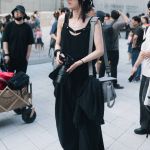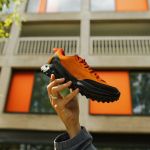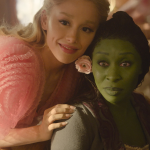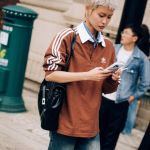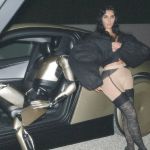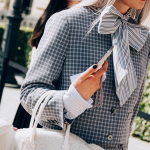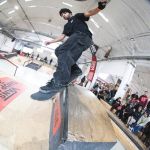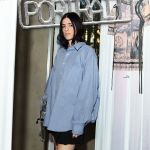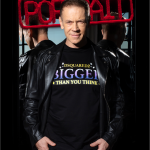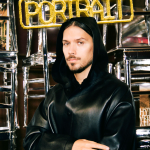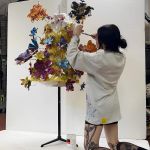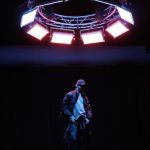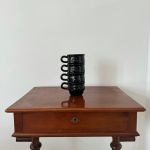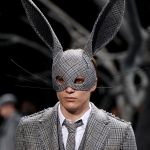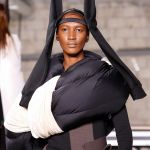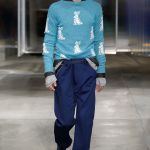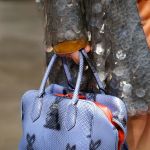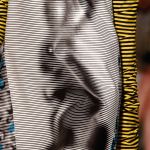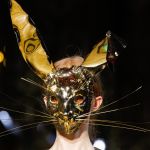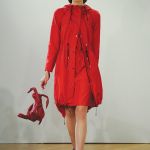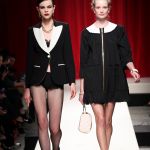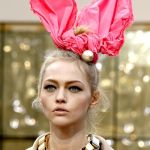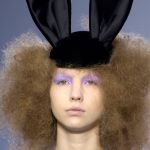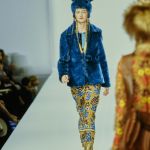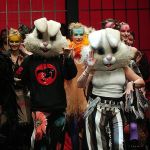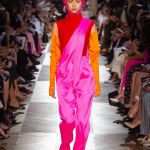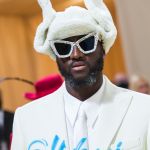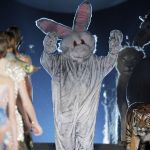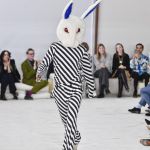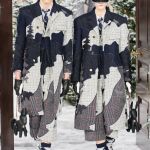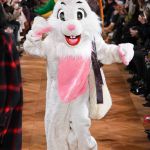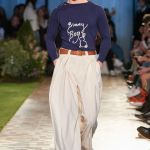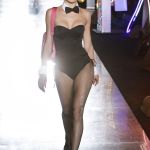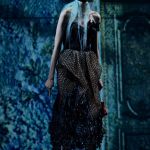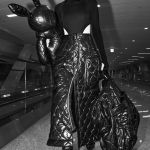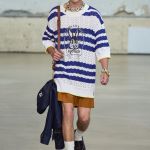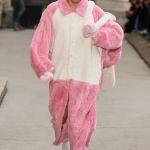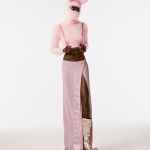
A brief history of rabbits in fashion
From Vivienne Westwood to Marni
March 31st, 2024
Even in a society like ours, where symbolism, beliefs and rituals have been supplanted by the rational laws of marketing and finance, there are some symbols that survive the centuries. One of these is the rabbit, an animal that today we associate primarily with Easter, but which through various cultural incarnations (think Bugs Bunny and the White Rabbit, the most famous) have retained their role as mythological tricksters, liminal creatures symbolic of perpetual natural change and fertility, metaphors of prudence and fear but also of witchcraft, lust and purity together (such as the Playboy Bunnies). The rabbit, in short, is an animal many meanings for our civilization are layered, which often, through its carnivalesque representation, have leaked into the world of fashion as well. One of the most unthinkable fashion recurrences, for example, is that of the designer bowing at the end of the fashion show disguised as a rabbit: Tiziano Mazzilli and Louise Michelsen began when they closed their brand Voyage's show in Milan in 2003, followed by Alexander McQueen who appeared to greet dressed as a rabbit at the end of his SS09 show, then it was Francesco Risso's turn to disguise himself in the same way for the finale of Marni's FW20 show while the last to do so was Virgil Abloh who wore a hat with rabbit ears at the Met Gala 2021. But these are isolated cases. Many more are those in which rabbits have appeared on the runway - cases that, by the way, have been multiplying over the years as if, as time has passed, the public has begun to find new and relevant correspondences between today's world and the iconographic archetype of the rabbit.
The modern epicenter of rabbits' presence in fashion is Vivienne Westwood's FW95 show, titled Vive la Cocotte, and halfway through which Kate Moss trod the runway in a gray ensemble, made-up face and, in her hands, a rabbit - probably as an ambiguous signifier of fragile tenderness and lust. This, by the way, was the first and only time an actual rabbit appeared on a catwalk. The second time it happened, during Gucci's FW21 show, the one of the collaboration with Balenciaga to be clear, the runway was only digital. About three years later, another 90s fashion icon brought a rabbit to the runway: Anna Sui, who included a blue fur hat complete with ears created by James Coviello to match a jacket of the same material for her FW98 collection seen at New York Fashion Week. The presence of the rabbit here is related to Sui's fascination with fairy tales and specifically the books of C.S. Lewis and the Art Nouveau illustrations of Walter Crane. After an appearance in Peter Jensen's FW05 fashion show, the rabbit (in the form of a pair of black ears) appeared in Comme des Garçons' FW07, a show that deconstructed the more naively or mischievously childlike sides of womenswear through delicate, childlike colors and materials, but also through hats with animal ears that included the famous Minnie Mouse ears that little girls wear at Disneyland.
After McQueen's appearance in a rabbit suit (he, we bet, imagined himself in the role of the trickster) it was Marc Jacobs' turn to revisit the rodent iconology the same year when, for Louis Vuitton's FW09, some models' headgear reproduced rabbit ears perhaps in homage to the laughing cocotterie of the great French fashion muses of the 1990s Lacroix and Lagerfeld. Four years later the rabbit reappeared: in the form of a leather bag in Raeburn's FW13 but especially in Undercover's extraordinary FW13 show for which Jun Takahashi, after a two-year hiatus from the catwalks, mixed the vibes of Vivienne Westwood of Donnie Darko and Eyes Wide Shut by putting on almost all the models creepy rabbit masks (other masks were cat-like) that seemed to draw on the witchy imagery connected to rabbits, linked to the world of black magic because of their own reproductive practices, their ties to the Celtic goddess Eostre (a name from which the English Easter was derived) and to the lunar deities of paganism. Years later, Takahashi would again include a rabbit among the feudal symbols featured on some leather jackets in his FW20 show inspired by Akira Kurosawa's Throne of Blood. Also in 2013, the rabbit ears reappeared in the Comme des Garçons Homme Plus show - a collection that insisted heavily on geometric patterns, the mix-and-match of prints and proportions to the latest ramifications of kitsch. Also here along with rabbit ears appeared Mickey Mouse ears. More rabbit ears, similar to those made famous by Playboy, appeared as mischievous references on Moschino's SS14 runway that also returned the following season, this time by the legendary Stephen Jones, on the Thom Browne runway, which centered its FW14 collection on the theme of hunting by populating the catwalk with animals of all kinds.
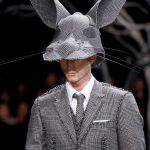
After a series of other appearances that included Olympia Le-Tan and Coach, the rabbit landed first in AF Vandevorst's FW15, again in the form of a hat signed by Stephen Jones, and then, most strikingly, in Prada's FW16 collection in which sweaters and women's dresses were plastered with the image of a rabbit that, in this case, seemed to evoke a kind of post-modern infantilism, courting the world of athletic, activewear crashing formalwear. The following year it was Rick Owens who sent several models with rabbit-eared-like headdresses down the runway for his FW17 collection, Glitter, created with the idea of ceremony and ritual in mind and definitely denoted by a pagan or esoteric vibe. The American designer, in any case, has been frequenting the symbol for years: one of his permanent long sellers is a rabbit-shaped bag introduced first in FW08 as the Mink Fur Bag and then reiterated from FW10 onward in the HUNRICKOWENS line. The following season it was Alessandro Michele, for Gucci's SS18 show, one of his most celebrated collections, who brought rabbits back to the runway in two versions: the first being Bug Bunny, and thus a reference to pop culture that the designer cheerfully remixed together with vintage and ultramodern designs; the second the embroidery of a rabbit that, together with similar representations of animals such as snakes, winged tigers and lambs, evoked that mystical Romanesque cathedral zoology that Michele favored. The following July, during Couture Week in Paris, Bertrand Guyon, then Schiapparelli's designer, brought gold rabbit masks and long-eared satin dresses to the brand's show - an homage to the extravagant looks the founder wore for her Parisian soirées.
In later years, both Moschino and Thom Browne brought rabbits back to the runway, but it was Stella McCartney who remained memorable when she used several animal-themed mascots mixed in with the looks of her own show to ask show guests to plant a tree for the good of the planet. Honestly, this was definitely the strangest appearance of a rabbit on the runway, perhaps because the mascot costumes jarred slightly with the rest of the looks and did not blend perfectly with the rest of the show, which, on the other hand, was quite sustained given also the location, the Opera Garnier in Paris. The following year, at the height of the pandemic, the rabbit returned in the form of an accessory in Juun.J's FW22 collection and then, grandly, in Maison Margiela's Artisanal collection, designed by John Galliano, where two rabbits appeared: one symbolic of innocence, entirely in white, and another looking more tormented and demonic - curiously, according to medieval saints, the rabbit changing its fur from red to white is symbolic of the dual nature of love, carnal and divine, and also of Christ's dual human and divine natures.
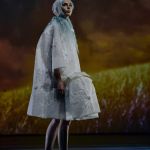
And here we come to the most recent seasons: Egonlab, S.S. Daley and Ambush used the iconography of the rabbit for their SS23 collections, the former in the form of a pop element and with a reference to Alice in Wonderland's White Rabbit; the latter, on the other hand, used the rabbit in its meaning as a symbol of love, fishing the reference from the epistolary of Vita Sackville West and Violet Trefusis, two lesbian writers in Edwardian England who, in their own letters, used the word "rabbit" to talk about their love. Ambush rabbits, on the other hand, were a reference to rave culture and the modern avatar craze and nostalgic video games of the 1990s. Finally, last January, it was Masayuki Ino of Doublet who had his own show opened by a model dressed as a pink rabbit-a mixture of the human and animal worlds meant to represent the concept of diversity, since all animals (there was also an orca, wolf, and panda costume) live in harmony in nature.














